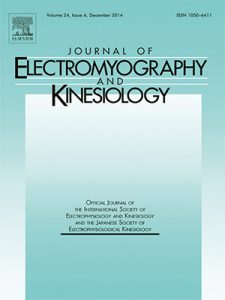已发表的论文

Validity of resting myotonometric assessment of lower extremity muscles in chronic stroke patients with limited hypertonia: A preliminary study
Authors: A.K. Fröhlich-Zwahlen, N.C. Casartelli, J.F. Item-Glatthorn, N.A. Maffiuletti
Affiliations: School of Health Professions, Institute of Physiotherapy, Zurich University of Applied Sciences, Winterthur, Switzerland
Journal: Journal of Electromyography and Kinesiology (October 2014, Volume 24) (DOI: 10.1016/j.jelekin.2014.06.007)
The aim of this preliminary study was to examine the validity of a recently-introduced tool (MyotonPRO) for the assessment of mechanical parameters of the main lower extremity muscles in patients with chronic stroke. Thigh and shank muscles of 20 stroke patients with limited hypertonia (11 men and 9 women; mean age: 52 ± 11 yrs) and 20 healthy controls (11 men and 9 women; mean age: 53 ± 10 yrs) were bilaterally evaluated with (i) MyotonPRO for muscle stiffness, tone and elasticity, (ii) ultrasonography for muscle and subcutaneous thickness, and (iii) dynamometry for isometric muscle strength. MyotonPRO parameters of stroke patients were reassessed a week later (inter-day test-retest design). For all the investigated muscles, MyotonPRO variables did not differ between the more affected and the less affected side of patients (P > 0.05 for main side effect), and neither differed between patients and controls (P > 0.05 for main group effect), except for gastrocnemius medialis stiffness that was higher in patients (300 ± 51 N/m) than in controls (281 ± 29 N/m; P < 0.05). Thigh muscle stiffness was negatively correlated to subcutaneous thickness (r = −0.84 for the vastus lateralis; P < 0.001), while only tibialis anterior stiffness and tone correlated positively with muscle thickness (both r = 0.46; P < 0.01). Test-retest reliability of MyotonPRO parameters was adequate, except for muscle elasticity. The validity of MyotonPRO for the evaluation of thigh muscles in chronic stroke patients is partially challenged by the poor discriminant ability and by the considerable impact of subcutaneous tissue thickness (sex-dependent) on mechanical parameters. The potential validity of MyotonPRO for the assessment of shank muscles requires further investigation.
In conclusion, although the MyotonPRO showed acceptabletest-retest reliability for the assessment of lower extremity muscles in chronic stroke patients with limited hypertonia, its validity for thigh muscles is partially challenged by the poor discriminant ability and by the considerable impact of subcutaneous tissue thickness (sex-dependent) on the derived parameters. Even though gastrocnemius stiffness discriminated between patients and healthy controls, the potential validity of MyotonPRO measurements for shank muscle remains to be verified in a larger group of stroke patients with different levels of hypertonia. Further research is also needed to identify the physiological correlates of MyotonPRO parameters.


